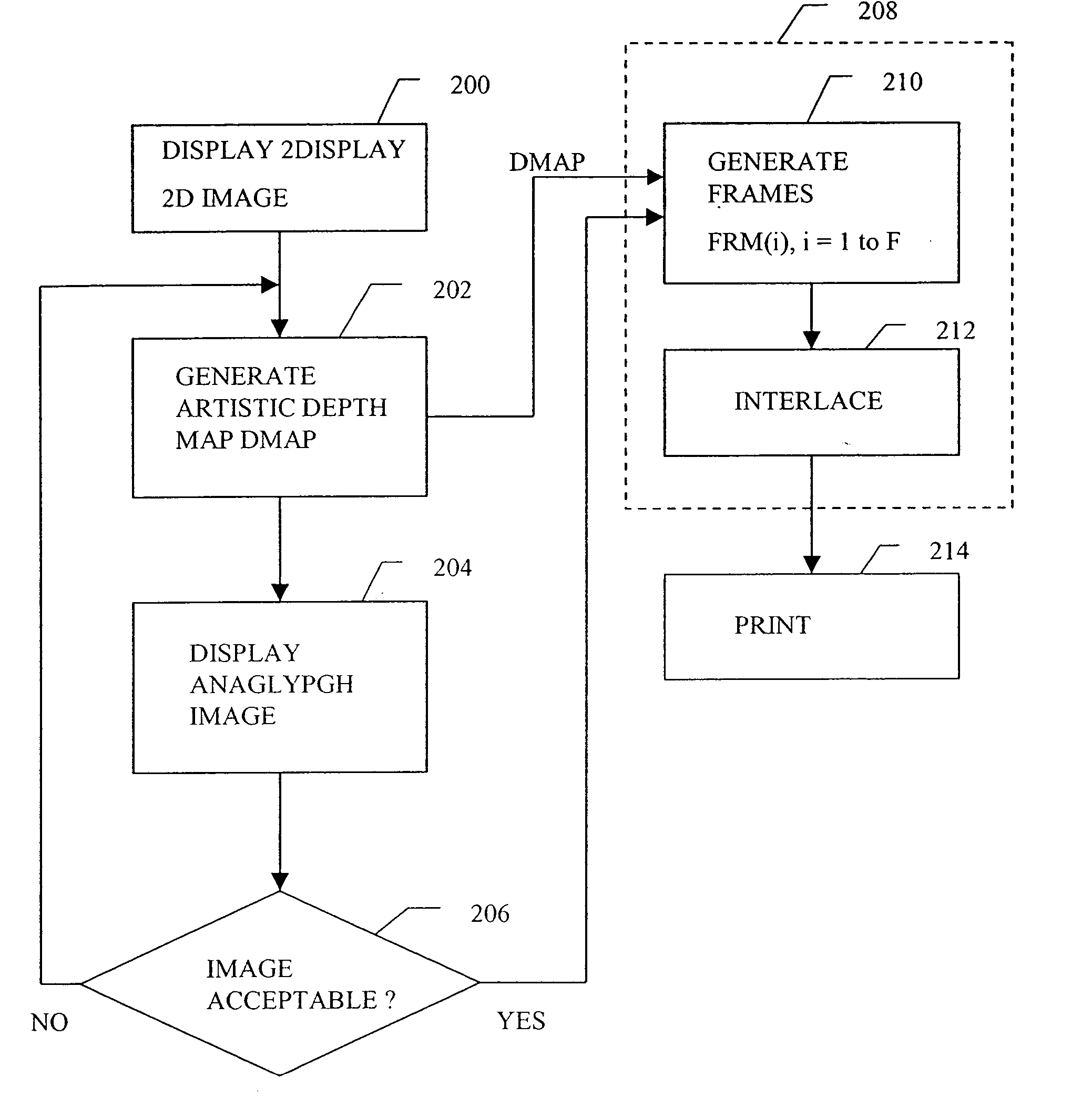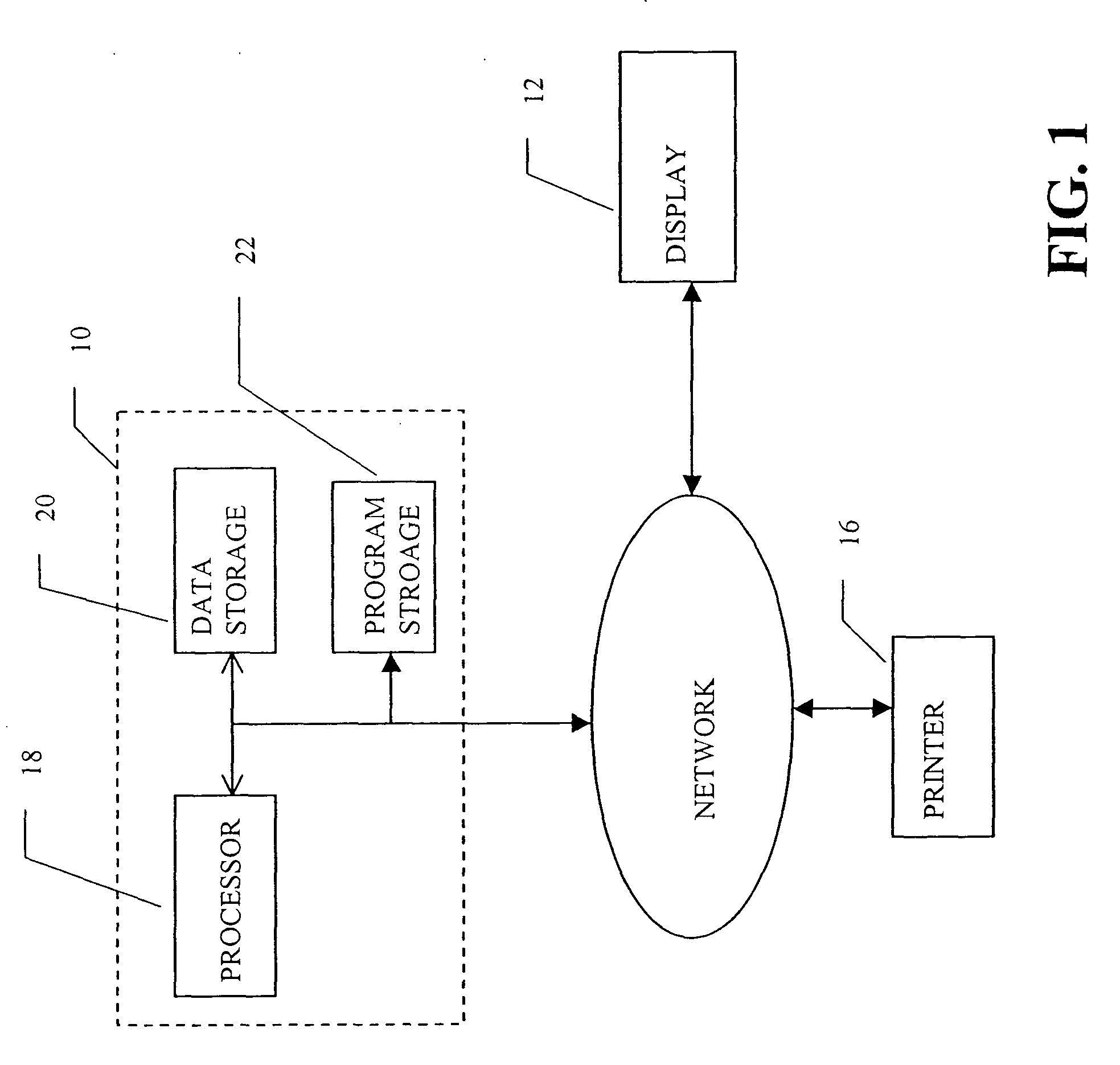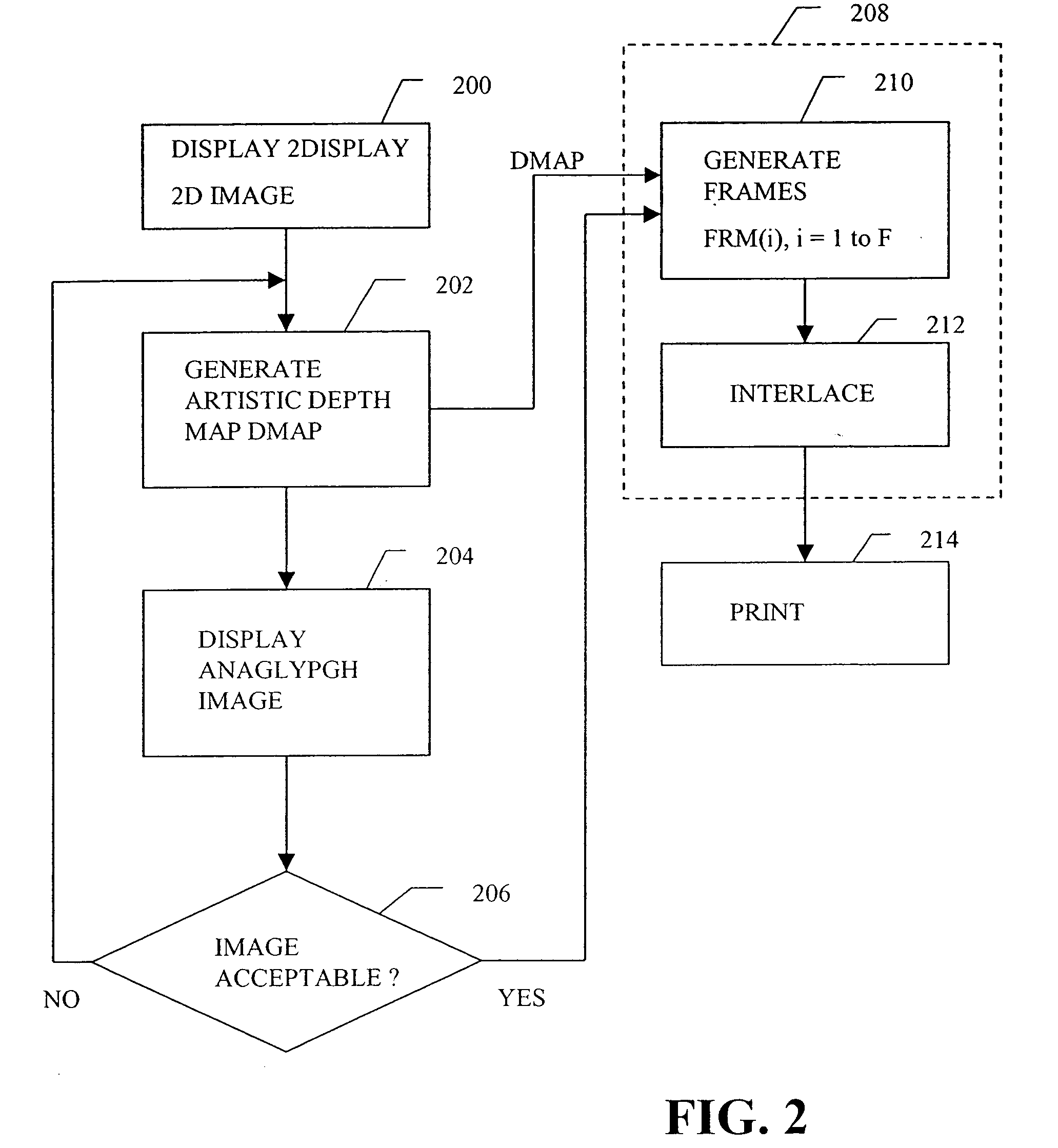Multi-dimensional images system for digital image input and output
- Summary
- Abstract
- Description
- Claims
- Application Information
AI Technical Summary
Problems solved by technology
Method used
Image
Examples
Embodiment Construction
[0057] Referring to FIG. 1 a first example system will be described. The FIG. 1 example includes a processing resource 10 connected to a display 12, a user command input interface 14, and a printer 16. The processing resource 10 includes a data processor 18, a program storage resource 20 and a data storage resource 22. The processing resource 10 may be an off-the-shelf general-purpose programmable computer, such as is available from numerous vendors. An example is a Dell Optiplex.TM. personal computer (PC), having an Intel Pentium IV or equivalent processor, 256 Mbytes of random access memory (RAM), a DVD-CD disc drive, and a 60 GByte internal magnetic disc drive, running under, for example, the Microsoft Windows XP.TM. operating system. The Dell Optiplex.TM. is merely an example implementation of the processing resource 10. Other implementations include, for example, an Apple G4 iBook.TM. or Powerbook.TM. computer, running under Apple's OS9 "Classic" or OSX.TM. Unix-type operating ...
PUM
 Login to View More
Login to View More Abstract
Description
Claims
Application Information
 Login to View More
Login to View More - R&D
- Intellectual Property
- Life Sciences
- Materials
- Tech Scout
- Unparalleled Data Quality
- Higher Quality Content
- 60% Fewer Hallucinations
Browse by: Latest US Patents, China's latest patents, Technical Efficacy Thesaurus, Application Domain, Technology Topic, Popular Technical Reports.
© 2025 PatSnap. All rights reserved.Legal|Privacy policy|Modern Slavery Act Transparency Statement|Sitemap|About US| Contact US: help@patsnap.com



